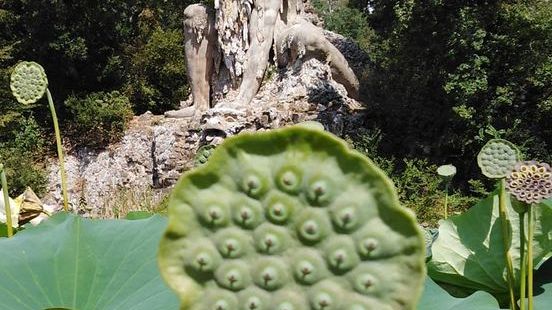A total loan of 7 million euros for the restoration and enhancement of four historic parks and gardens of the city: the green areas of the Cascine, Villa Strozzi, Fortezza da Basso and Pratolino.
This is what the candidacies for the Pnrr funds foresee, presented today by the Municipality of Florence and the Metropolitan City, with the requested financing amounting to 1.6 million euros for the gardens of the Fortezza da Basso, 1.9 million for the park of Villa Strozzi, 1.5 million for the Cascine park and 2 million for the Pratolino park. “We want the Pnrr to sign for a real decisive environmental turn for our territory,” the mayor Dario Nardella said, “By protecting and valorizing the great parks of the Cascine, Villa Strozzi and Pratolino, as well as by requalifying them.
We want to give the citizens safer and more livable gardens like those of Fortezza da Basso. With four interventions of 7 million euros in total, we will restore vitality to these green areas, taking care of the environmental, monumental and everyday social aspects. These will give numerous benefits from the points of view of air quality, conservation of beauty and the revival of these historical places".
"Three important interventions for our historical green heritage”, said the Environment Assessor Cecilia Del Re, “To enhance the environmental and cultural aspects of the city’s important places such as the Cascine and Strozzi parks and other gardens that require important interventions similar to those of the Fortezza da Basso. The aim is to preserve and restore both the environmental elements and the monumental ones, while increasing possibility of uses of these places in a perspective of environmental education.
In all three cases, these are parks that are city-sized due to their dimensions and centrality within the system of green spaces, but also district-sized, and they serve both the citizens of the historic centre and those of District 4, all of whom really appreciate these areas. The proposals therefore are aimed at fully improving the areas for the benefit of not only those who frequent these places every day, but also for visitors and the international public who arrive in Florence and want to experience the outdoors, to discover places which have many stories to tell and to explore unique, environmental contexts."
Approfondimenti
“The 'water path' is a treasure within a treasure," said the Councillor for the parks of the Metrocittà, Letizia Perini, "the blue gold in that green treasure chest that is our Garden of Wonders. If the intervention at Pratolino Park is successful, it will be a great step forward for the Colossus of the Apennines, in whose marble veins water will, in a certain sense, flow again.”
Regarding the Parco delle Cascine, the work will concern tree conservation, the planting of new vegetation, and the replacement of the tarmac with a fast-draining asphalt. This will restore the historical value to the park, by improving the conservation of the green heritage over time and making the park safer for citizens.
Taking care of existing plants and increasing the green patrimony will not only mean more shade, hence a decrease in temperature to contrast the “heat islands”, but it will also mean an increase in the production of oxygen as well as Co2 removal.
Decreasing the accumulation of water on the walkways will lead to a more comfortable microclimate and it will facilitate a sustainable drainage of water. The realisation of educational itineraries to observe botanical emergencies, and the installation of a didactic beehive, will contribute to enhancing the park as a natural element of high interest to citizens. As regards the "exemplary" trees, that is, important specimens due to the size and architecture of the foliage, the project foresees the continuous monitoring of their stability through the use of tilt-control plates.
The results will be recorded both seasonally and after any occurrence of intense meteorological events. The number of plants will be increased by planting typical forest-tree species and trees of high ornamental value, all of which have been historically present in the Cascine. The vegetation will occupy the various floors (lower, intermediate and upper), guarantee ground cover, increase species diversity, and rejuvenate the heritage as a whole (quality). A long stretch of road (viale dell'Indiano and viale del Pegaso) will be rehabilitated with fast draining asphalt (quality and environmental sustainability).
As far as facilities are concerned, in addition to upgrading and improving the efficiency of the irrigation system which uses groundwater, the project includes special maintenance of the rainwater drainage network. The project also includes the construction of a new well (quality, environmental sustainability). Finally, the project envisages the installation of signs and general information panels, as well as the creation of a path, to learn about botanical emergencies and the creation of an educational apiary.
The intervention in Villa Strozzi Park aims to increase and improve the vegetative conditions of the various green elements, but also to carry out important maintenance of many artefacts, such as the repairing of the retaining walls, the maintenance of the enclosures and fences, and the restoration of the works of art. The trees in the park are an identifying element of the place and the plants must be taken care of for as long as possible. In addition, the restoration of the architectural components will contribute to establishing the Park's status as an historical and artistic asset. The special maintenance of the railings and the fences will make the steepest parts safer.
The work on the Fortezza gardens aims to restore this central and important historical garden to the community, by improving the paths, the monumental fountain and the vegetation components, so as to make this a more beautiful and welcoming place, safe for all users and suitable for hosting both free and organised activities throughout the year.
Improving the vegetative conditions of the various green elements and increasing their number by replacing missing specimens, means increasing the production of oxygen and reducing pollution of a heavy traffic-flow area. In order to reduce the noise pollution caused by the intense urbanisation of the area, the project also foresees the mechanical intervention on the fountain which will increase and direct the jets of water in such a way as to create a sound which will mask the road noise by covering it up with the pleasant, natural sound of flowing water (natural sound masking).
Regarding irrigation, the project plans to implement a “smart irrigation" system by installing sensors that measure the temperature, the soil humidity and the amount of watering. Through connecting to an internet server, the system will receive data regarding weather forecasts and will be able to calculate when and how to irrigate.
The estimated benefits are notable: up to 30% litres less of water needed per year; more efficient on-site inspections by environmental operators, with a consequential reduced number of transfers of workers, thanks to automatic leak detection and/or flagging of faulty sensors and sprinklers. A lighting system of the water basin will add value to this central element of the garden.
As regards the park of Pratolino, the intervention foresees the restoration of the “water path” with all its fountains in the area of the Medicean garden. The renaissance hydraulic technology will be re-enabled, so that it will once again express the wonders previously seen in the past. Regarding the Fountain of Jupiter and its caves, the basin, the underneath vaults, the fountains and the functionality of the basin nearby will be restored and reactivated; the Fountain of the Sponges, the Fountain of the Mask (with the basin in front), the Fountain of the Mugnone (including the surrounding paving).
Regarding the Grande Voliera, the restoration project foresees both the checking of and the replastering of the backdrop of the fountain (including the sponges), as well as the restoration of the fountain with its cascades, and lastly bringing the stairway up to safety standards.
Viale degli Zampilli, the floor fountain of which runs laterally on either side of the pavement, will also be restored The water of this fountain will be completely reused. Moreover, there will be a conservative and functional restoration of the Gamberaie, with a structural intervention that aims to restore the functionality of the waterway and to re-establish the connections between the six basins in the form of waterfalls. Hence, the restoration of the Washerwoman Basin and of the pier; the functional reopening of all the minor fountains existing in the Park, such as the cave of Cupid and others, the basin of Paggeria, the fountain of Villetta, the fountain of Limonaia and the basin of Ranocchia (in front of the cave of Cupid).
The project of the Metrocittà also includes interventions on vegetation in the Unesco area, the safety of trees, both along the paths and inside the wood, the regeneration of the areas of the undergrowth, the enhancement of biodiversity in grassland areas and, finally, the creation of theme gardens.
Tradotto da: Aprigliano Nadia, Bianchini Leonardo, Bodea Alexandra Maria, Brizi Niccolò, Buonagurelli Martina, Cavallin Aurora, Giacinti Alice, Giani Tommaso, Iocca Giulia, Lotti Azzurra, Manco Christian, Ribeiro Edoardo, Tocchini Carlotta, Tuveri Elena della classe 5G Linguistico dell’Istituto Russell-Newton





